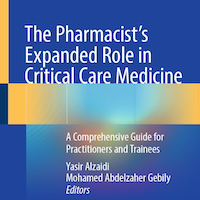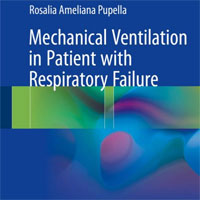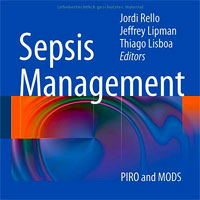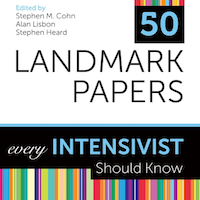VAP Recurrences Definition: European Experts Consensus
This consensus by European experts proposes four different ventilator-associated pneumonia (VAP) recurrence entities which should facilitate the harmonization of recurrence criteria for clinical practice and future studies. Thirty-six... read more
The Pharmacist’s Expanded Role in Critical Care Medicine: A Comprehensive Guide for Practitioners and Trainees
This new book will serve as a useful resource for all pharmacists involved in the management of critically ill patients, whatever their level of experience and training. There are few textbooks aimed specifically at critical... read more

Early Initiated Noradrenaline vs. Fluid Therapy for Hypotension and Shock
The VASOSHOCK trial is a pragmatic, multi-center, superiority, randomized controlled trial investigating early initiation of peripheral noradrenaline in hypotension and shock, investigating the impact of this treatment on... read more
Management of ARDS COVID-19 Patients Using Hemoperfusion and CRRT
Combined hemoperfusion (HP) and continuous renal replacement therapy (CRRT) hold promise as a potential intervention for severe COVID-19 cases with multiple organ dysfunction, leading to improved clinical outcomes. Fifty-six... read more
Severe Adenoviral Infections: Disease Progression and Poor Prognostic Markers
Low hemoglobin, high serum ferritin, and high LDH in the second week are markers of disease progression and poor prognostic markers in severe adenoviral infections, emphasizing further research and targeted interventions. The... read more
Lung-protective Ventilation Strategies for Mechanical Ventilation
This study is an important step toward optimizing mechanical ventilation strategies, addressing the interplay between mechanical power, gas exchange and long-term respiratory outcomes could further refine lung-protective... read more
Increased Sodium Levels Associated with Ceftriaxone Administration
Serum sodium elevation is considered a frequent manifestation in critically ill patients, with significant clinical outcomes and requiring timely management. This case report suggests a possible association between the... read more
Mechanical Ventilation in Patient with Respiratory Failure
This handbook covers the principles of mechanical ventilation, making them easy to understand and apply in clinical settings. Presented in an accessible style and supplemented by a wealth of illustrations and graphs, it includes... read more

Dynamic Left Ventricular Outflow Tract Obstruction Induced by IABP in Patient with Angioedema
Mechanical circulatory support with intra-aortic balloon pump (IABP) can aid in the treatment of cardiogenic shock but may rapidly become detrimental due to the reduction in systolic arterial afterload in patients with predispositions... read more
Glycemic Control Role in Inflammation Markers and Clinical Outcomes in Type 2 Diabetes Patients with Severe COVID-19
This study demonstrates that among hospitalized COVID-19 patients with type 2 diabetes mellitus, poor glycemic control (HbA1c ≥ 7%) correlates with increased systemic inflammation, greater disease severity, and worse clinical... read more









